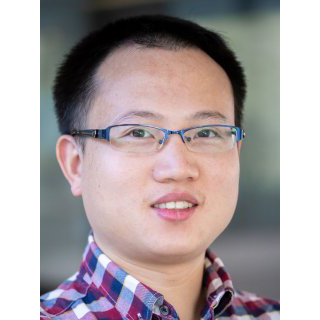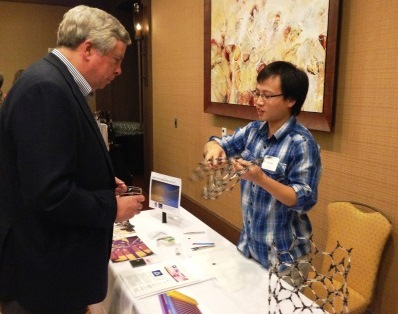
Dr. Sanfeng Wu (Ph.D. ’16) talks to CEI about his research in UW professor Xiaodong Xu’s lab, his recent postdoctoral fellowship at MIT, and the future of his work at Princeton.
March 18, 2019
Q: What was the focus of your Ph.D. in physics at UW?
A: I joined Professor Xiaodong Xu’s group in 2011. Over the course of my Ph.D., I studied several different aspects of two-dimensional (2D) materials, including novel structure synthesis, nano-optical devices, and clean energy devices. These materials are crystals that are one atomic layer thick, and they often exhibit unique properties. In particular, I worked with monolayer transition metal dichalcogenides, some of which are very interesting semiconductors.
Xiaodong created an excellent research environment in his lab. I was lucky to learn from him, work with him, and also develop a friendship with him.
How did CEI help to further your research and professional development?
In 2014, I was fortunate to be selected as a member of the first cohort of CEI Graduate Fellows to research optimization of 2D materials for light-harvesting devices. Through CEI, I also learned about the most recent developments in clean energy technologies. This was essential to the shaping of my understanding of the link between fundamental physics and realistic applications. As a physicist, I was trained in the fundamental aspects of natural phenomena, but I had little experience in making use of them for real-world challenges. My new lab will emphasize on both fundamental research and realistic device applications. Overall, my experience at CEI helped build my confidence in my ability to address real-world challenges in my research. It was a pleasure to become part of the CEI community.

You recently completed a postdoc as a Pappalardo Fellow at MIT.
Describe the relationship between your Ph.D. at UW and your work at MIT — how did your research progress?
My experience at UW directly informed my research at MIT — both research groups are playing active roles in the exciting new field of 2D topological devices. At MIT, I also worked with monolayer transition metal dichalcogenides, this time to study quantum electronics. 2D topological devices are useful not only for optoelectronic devices, but may also be useful for researchers trying to create exotic new particles on a chip.
What will your primary research focus be at Princeton?
My group at Princeton will explore exotic quantum phenomena in 2D materials and seek quantum-based solutions for real world challenges. We are driven by a fundamental curiosity about quantum physics, which continues to produce surprises in the lab even after about a century of investigation. Quantum technology may hold the key to future devices that we use for computation, memory, and communication. It might also impact our clean energy solutions in an unprecedented way. However, quantum technology is still in its infancy — we need to explore new quantum materials, discover new quantum phenomena, and then create and optimize the devices. Looking ahead to the future, quantum physicists will need to take some “moonshots” to produce high rewards with the right breakthrough. I hope my lab can play an active role in such developments.
What advice would you give graduate students pursuing academic careers in the field of clean energy?
While I’m not seasoned as an advisor, I will share one feeling from my own experience — it is to follow your heart and always remember the big question that originally drove you to become a researcher. You might be developing skills in a seemingly different field, but if you always keep your goal in mind, you may one day find that you hold the key to something that nobody else has.
Related: CEI Graduate Fellow Earns MIT Pappalardo Fellowship in Physics




